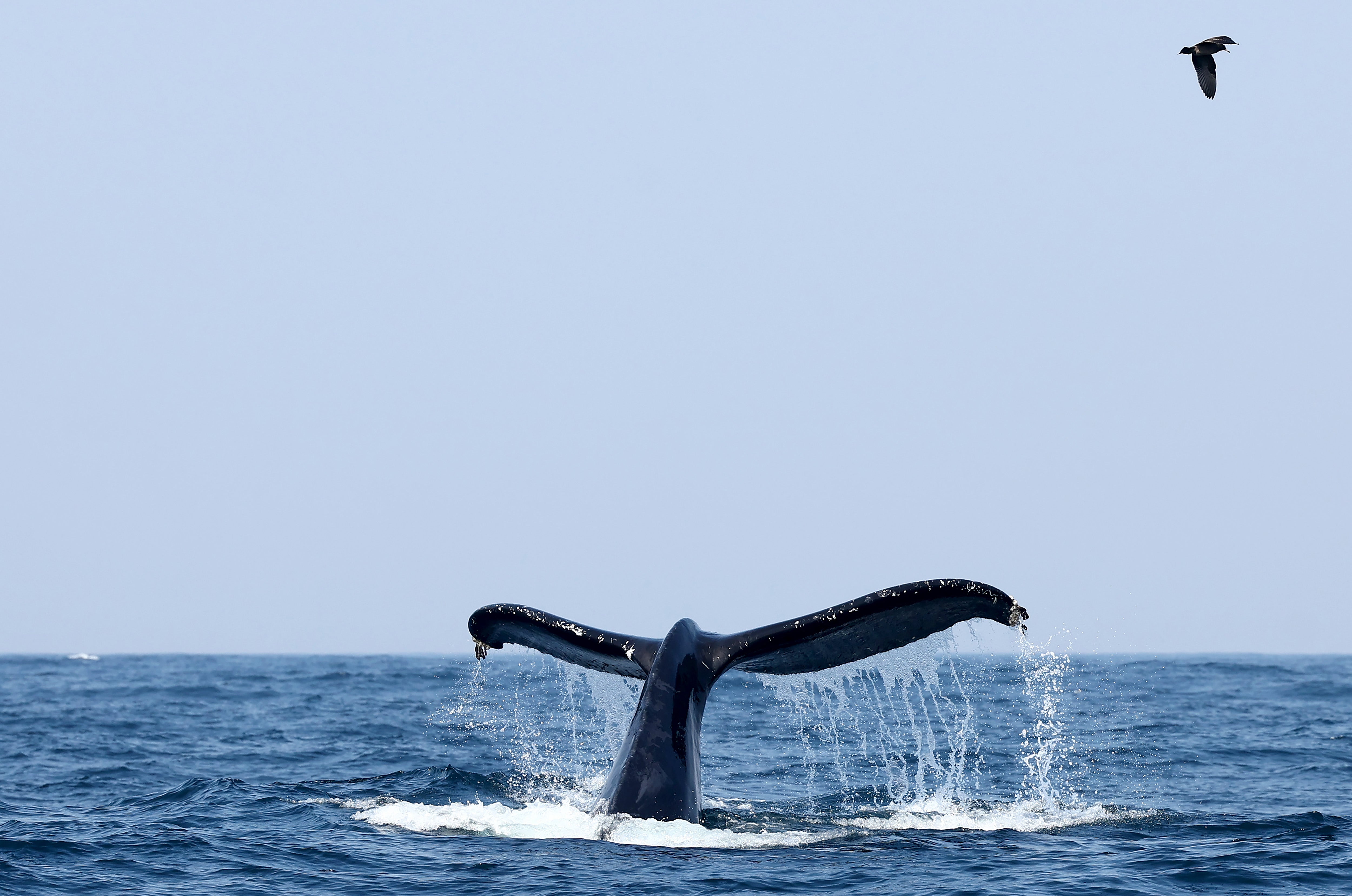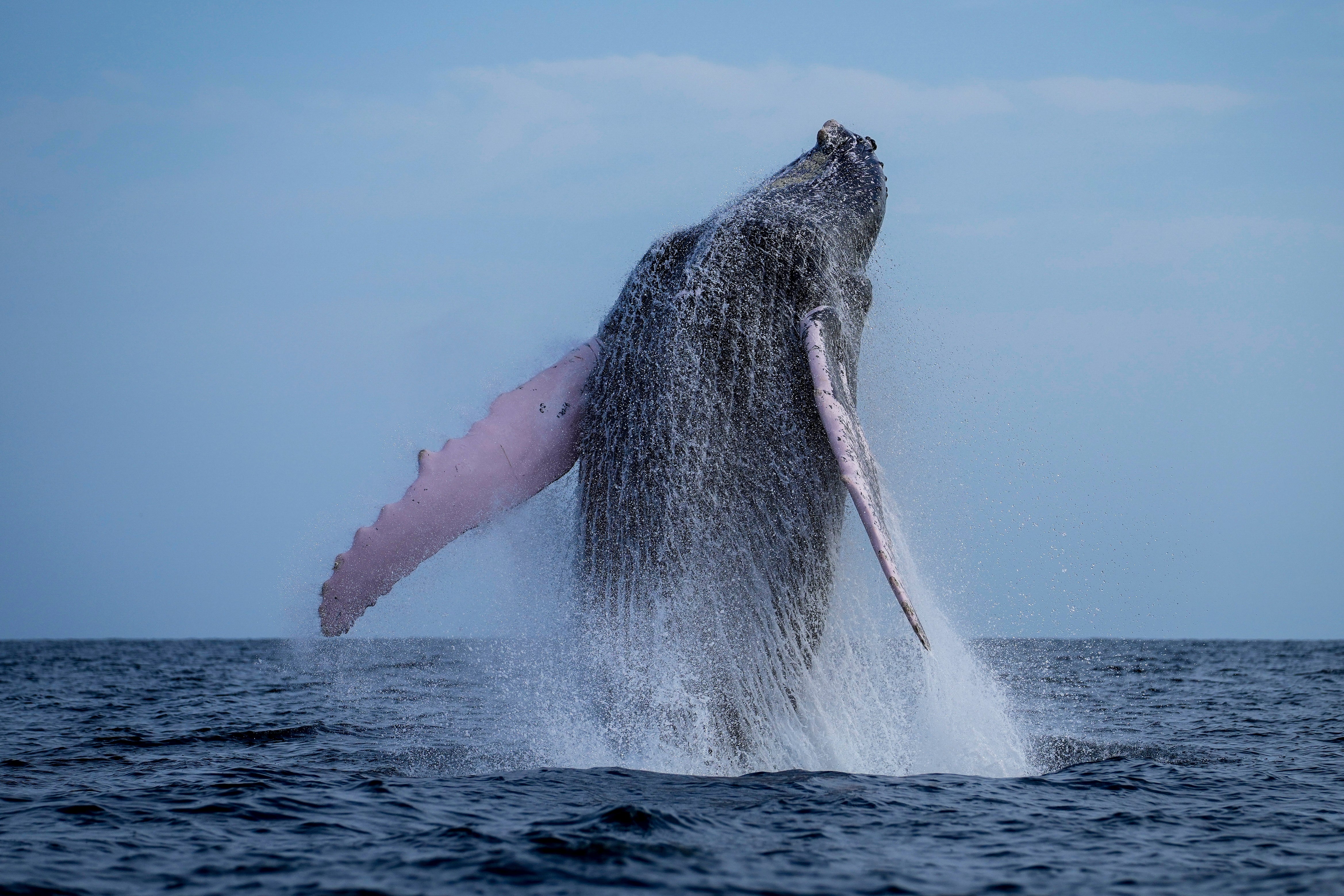Whale sightings boom on UK coasts hints at victory for anti-hunting laws - and a climate warning
The 30-tonne mammals have been spotted from Sussex and the Isles of Scilly over the last month

Your support helps us to tell the story
From reproductive rights to climate change to Big Tech, The Independent is on the ground when the story is developing. Whether it's investigating the financials of Elon Musk's pro-Trump PAC or producing our latest documentary, 'The A Word', which shines a light on the American women fighting for reproductive rights, we know how important it is to parse out the facts from the messaging.
At such a critical moment in US history, we need reporters on the ground. Your donation allows us to keep sending journalists to speak to both sides of the story.
The Independent is trusted by Americans across the entire political spectrum. And unlike many other quality news outlets, we choose not to lock Americans out of our reporting and analysis with paywalls. We believe quality journalism should be available to everyone, paid for by those who can afford it.
Your support makes all the difference.A surge in humpback whale sightings reported across the English Channel over the last month has whale watchers puzzled.
The Sussex Dolphin Project said the 30-tonne mammals have been spotted from every between Rye, Pett Level, Fairlight, Hastings and St Leonards.
There have been 17 sightings of the whales around the Isles of Scilly, off the coast of Cornwall, between 29 December and 8 January this year, The Guardian reported.
“We believe the humpbacks that pass through the Eastern English Channel are coming from the feeding grounds in the Arctic Circle and travelling South to warmer waters often used for breeding grounds,” Thea Taylor of the Dolphin Project told the BBC.
“They would usually travel along the West Coast of the UK, and we do not currently know what causes them to travel down the East Coast.”

An awe-struck resident of West Sussex described one of the animals “putting on a show” for her as she watched on.
“The whale was sort of just coming up, then suddenly he just started breaching out of the water and put on a proper display for us,” she told the BBC.
Traditionally, the whales move around the western side of Britain but some are now swimming down the east coast and through the Strait of Dover – possibly re-establishing ancestral routes that were abandoned when so many humpbacks were slaughtered by 19th- and 20th-century whale-hunters.
While the sightings hint the global population of the species is on the rise after a ban on commercial hunting decades before, it may also by a symptom of the varying availabilty of food.
But the growing number of winter sightings may also be linked to the changing availability of food. Humpbacks are filter feeders, scooping up huge quantities of plankton, tiny crustaceans and small fish.
“We’re seeing a lot of bait fish – smaller fish like anchovies – around the south west coasts,” Ruth Williams, the head of marine conservation for the Wildlife Trusts, told The Guardian.
“They are very quick reproductively, and with climate change their stocks are moving up closer to our waters.”
“These individuals might be stopping off because they are vulnerable and need to feed so we ask boat owners to give them space.”
Join our commenting forum
Join thought-provoking conversations, follow other Independent readers and see their replies
Comments